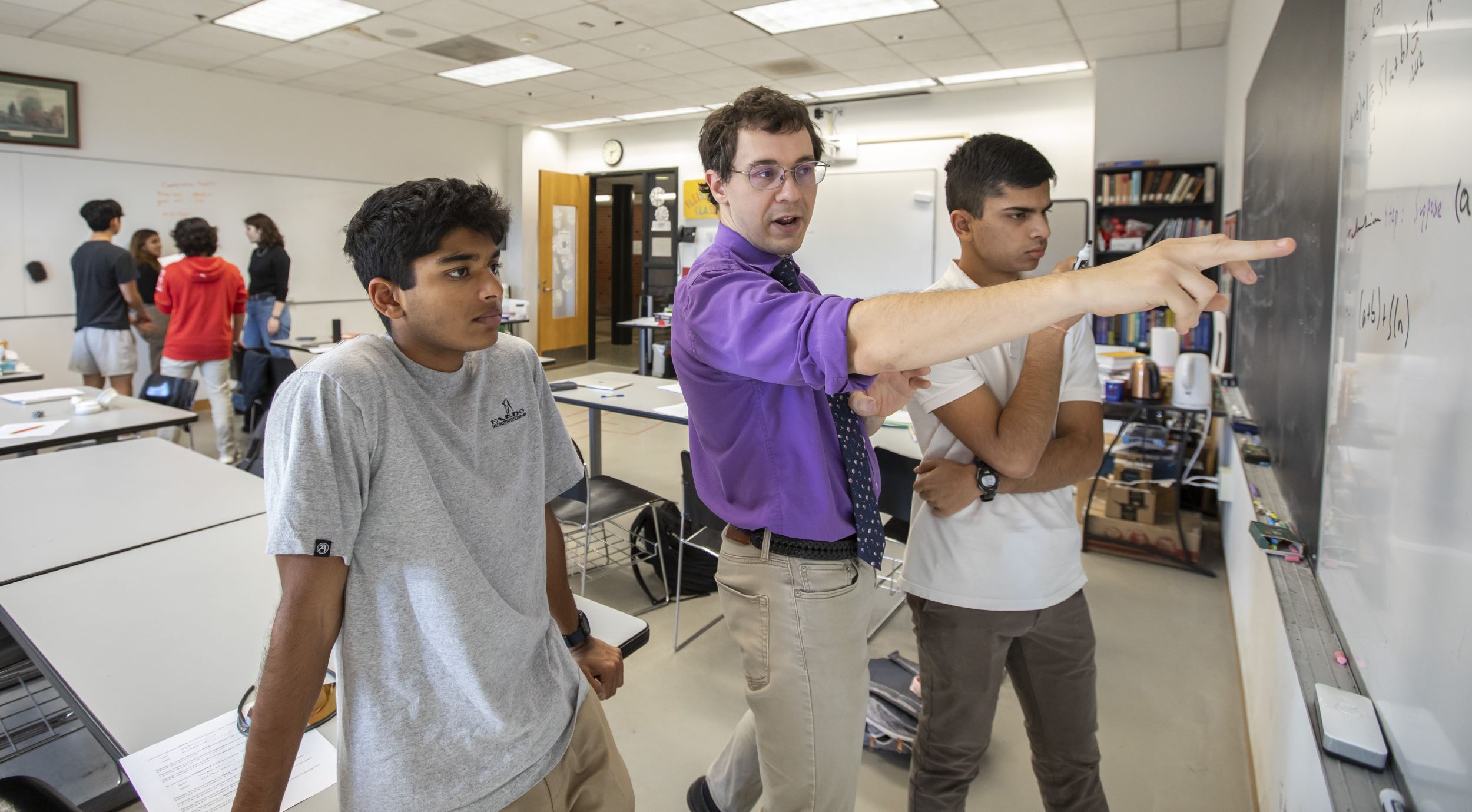

Where Mystical Meets the Real World
Introduction to Number Theory and Differential Equations captures both the ancient wonder of mathematics and its modern relevance.
For mathematics teacher Anton Fleissner, Introduction to Number Theory and Differential Equations is more than a typical high school math class. This college-level seminar, available to students who have completed or are enrolled in other 500-level math courses, captures both the ancient wonder of mathematics and its modern relevance, linking its lessons to practical use.
“If you are interested in why there are infinitely many Pythagorean triples or why the square root of two is irrational, those are statements in number theory known long ago,” Fleissner says. “It’s mystical, but at the same time, it has deep real-world applications.”
To explain how its principles now underlie critical technology, Fleissner notes that check digits, which verify the accuracy of tracking numbers for an assortment of travel tickets, as well as book-publishing identification numbers, or ISBNs, are grounded in number-theoretic properties. This, he
says, demonstrates the impressive ability of number theory to ensure security and catch human errors in important systems.
The real-world relevance of the subject is appealing to Fleissner’s students.
“Number theory is foundational to modern cryptography and blockchain, which rely on the concepts of prime numbers and divisibility to keep our data safe and our digital world in order,” Sofia Liu ’25 says.
Nitza Kahlon ’25 was attracted by the mix of creativity and the need to generate logical arguments to back up claims.
“It adds so much in other areas of life,” she says. “Creativity and problem solving are key skills that go from school, to sports, to projects, and more.”
Kahlon says that number theory has always been her favorite area of mathematics, having been exposed to it through math competitions. She says most high-schoolers will know integers, prime numbers, and divisibility, “but what’s special about number theory is the way it takes these simple elements and builds upon them, creating complexity that can be very interesting and beautiful.”
Later in the year, the class will delve into differential equations, which offer a more direct connection to everyday life.
“Differential equations are really just about equation solving where the equations themselves involve derivatives,” Fleissner explains, adding that its applications range from thermodynamics to aerodynamics. Students will model dynamic systems, such as how the temperature of an object changes when placed in a different environment or how a spring behaves.
Although the course is challenging, Fleissner believes students rise to the occasion.
“I often worry, Is this too hard? Or too easy?” he admits. But he’s gratified when students thank him for a thought-provoking test, noting that the balance between difficulty and accessibility is crucial.
“They want to be challenged,” he says.
‘Very Interesting and Beautiful’
What is it about Number Theory and Differential Equations?
“‘Beautiful’ math is kind of an oxymoron, but the way these deep concepts can be represented simply and eloquently is the ‘beauty’ of the subject — building to the complex from the simple. Coming to a concise and clear proof or an elegant solution has always been my favorite part of mathematics.”
Nitza Kahlon ’25
“I have always been interested in cryptography and blockchain, fascinated by how numbers protect ‘truths’ and thereby build trusts in our world. So, I see number theory as math’s answer and solution to the philosophical questions and real-world problems of ‘how do you build trust and defend authenticity?’”
Sofia Liu ’25
“The class emphasizes a lot of thinking outside of the box, a lot of trial and error, and especially a lot of collaboration. If you like math, this is the course for you.”
Mila Cooper ’26
“As the coursework becomes more challenging, support from peers becomes more invaluable as everyone has their own unique experiences and perspectives for each problem. It may seem intimidating, but it is actually one of my most fun and chill classes, so I would definitely recommend it.”
Kevin Xu ’26
“We collaborate in small groups over different problems before presenting our work to the larger class. As we present, other class members ask questions and challenge our work, and we defend it, giving us a solid understanding of what we are doing.”
Ava Martoma ’25
